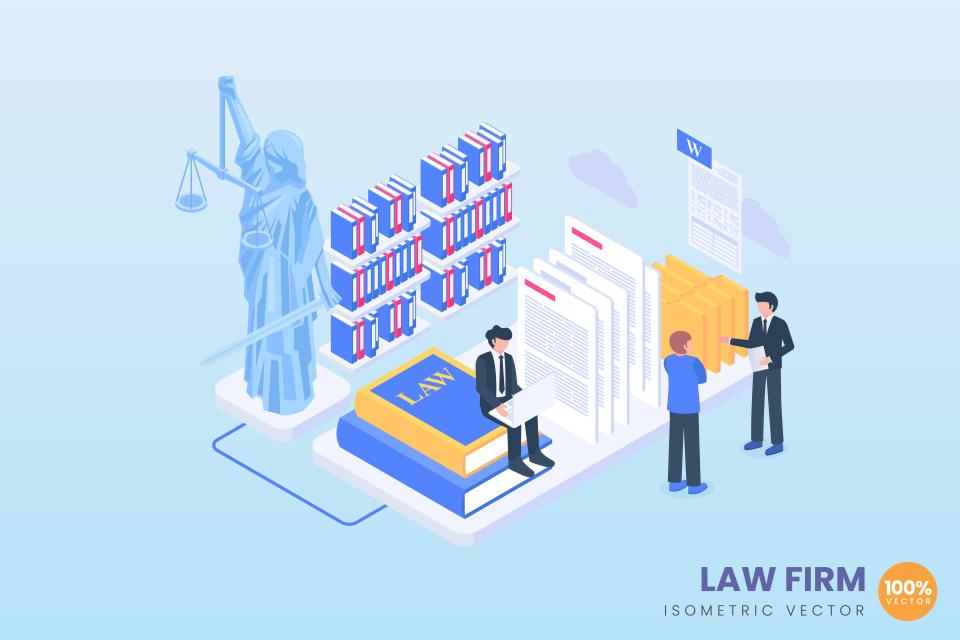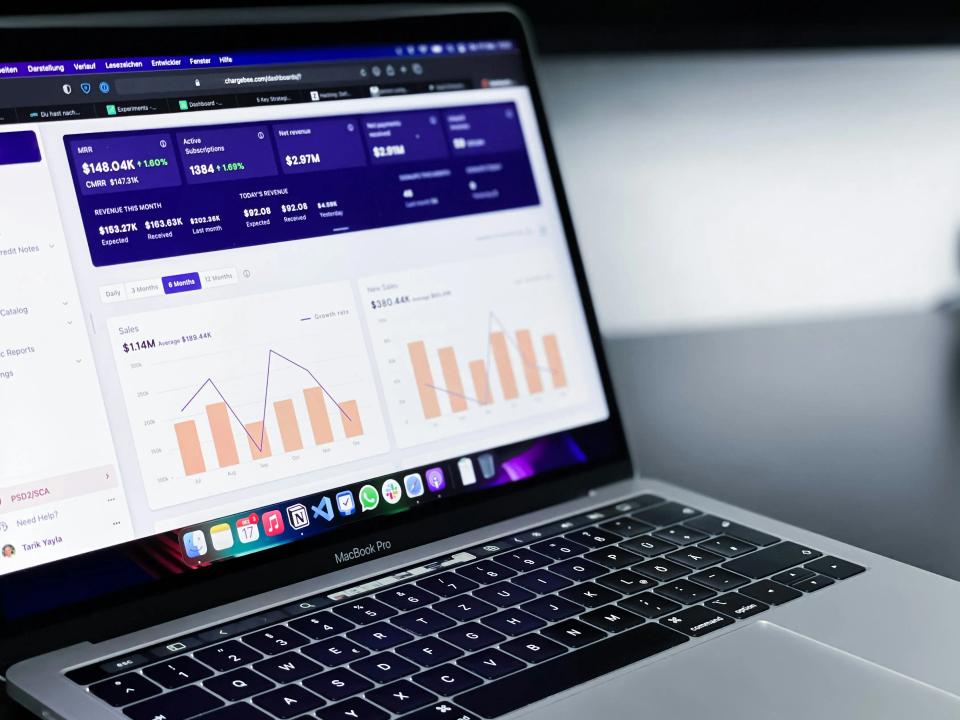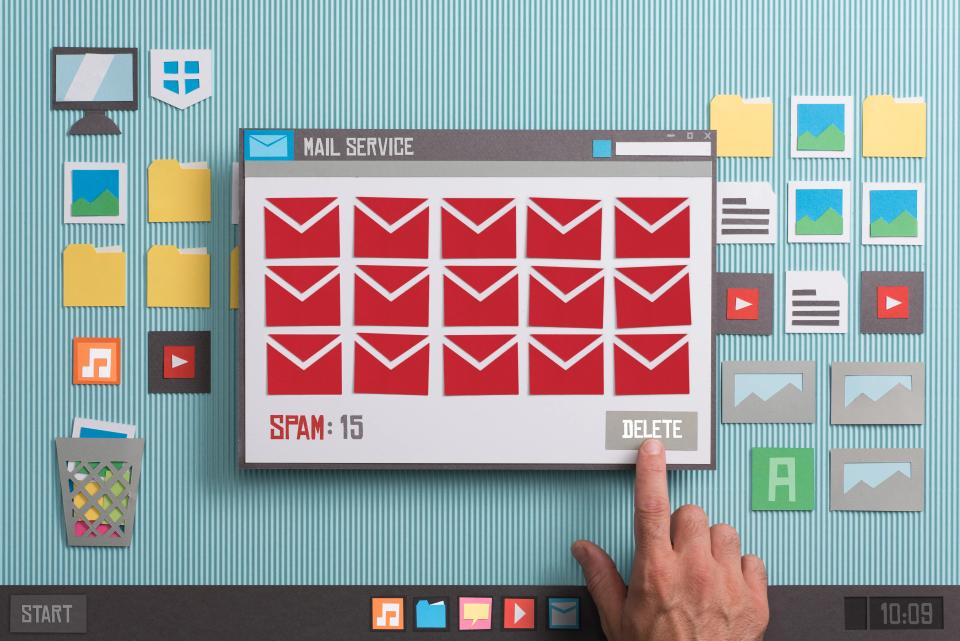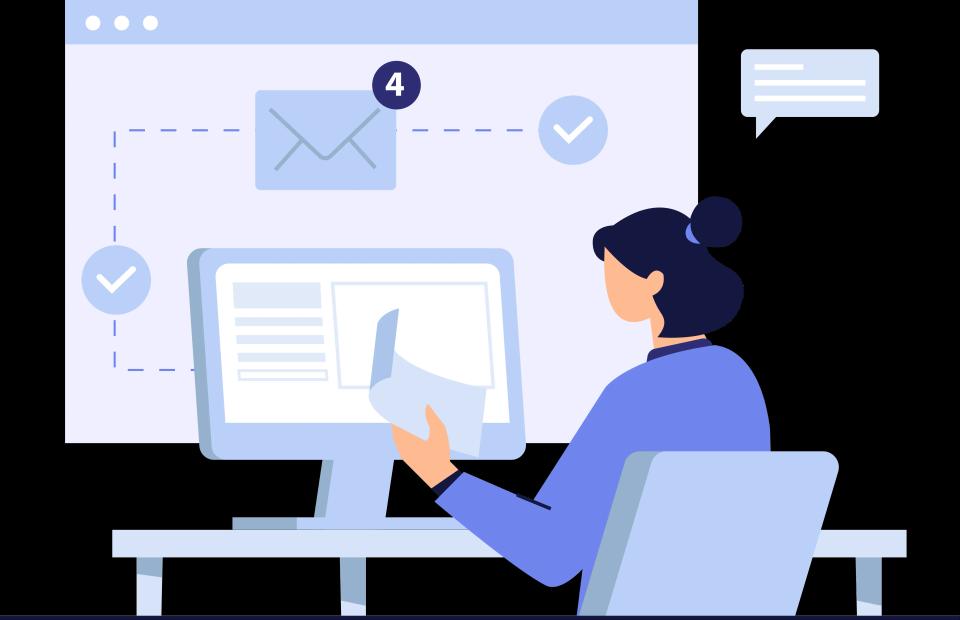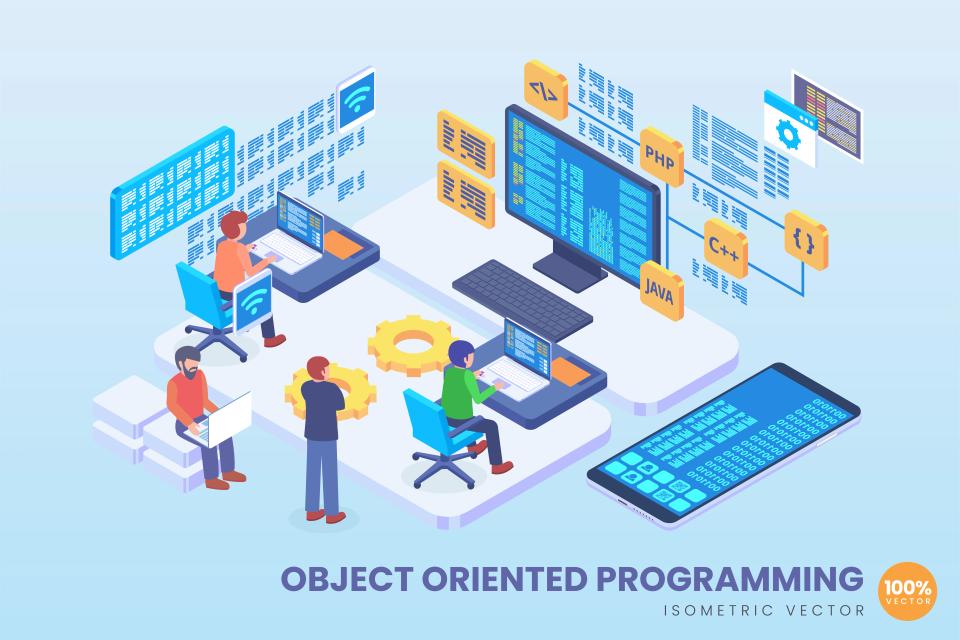Imagine your firm's calendar, absolutely packed. Not with just any appointments, but with high-value consultations, clients eager for your specific legal mastery. Picture a steady, predictable stream of ideal clients, the ones who truly appreciate your expertise and are ready to invest in it. This isn't a pipe dream; it's the tangible result of ruthlessly effective cold email outreach, tailored for the unique landscape of legal services.
In a digital world drowning in marketing noise, a precisely crafted email cuts through like a hot knife through butter. For ambitious law firms, it’s a direct, private line to the decision-makers you need to reach, bypassing gatekeepers and the often-exorbitant costs of traditional advertising. It’s personal, it’s scalable, and when executed with strategic precision, it’s an unbelievably potent tool for growth. The numbers don't lie: email marketing can deliver an astonishing ROI, with some studies showing returns as high as $36 for every $1 spent.
Why does this channel continue to dominate, especially in a field as nuanced as law? Because it allows for targeted, value-driven communication. While general legal services see an average email open rate of around 21.96% according to Mailchimp's email marketing benchmarks, a hyper-personalized approach can significantly boost this, ensuring nearly one in five (or even more) of your carefully selected prospects will see your message. The question isn't if email works; it's how to make it work for you.
Understanding Your Target Audience: The Foundation of Success
Pinpointing Your Ideal Client Profile
Who, exactly, are you trying to captivate? Is it the embattled startup founder desperate for ironclad IP protection before their next funding round? Perhaps it's the CEO of a mid-sized corporation navigating the treacherous waters of complex commercial litigation. Or maybe it's the high-net-worth individual seeking sophisticated estate planning to secure their family's future. Defining this ideal client avatar with laser-like precision isn't just important; it's the absolute bedrock of any cold email campaign that aims to do more than just fill an inbox.
Without this clarity, your messages become generic, easily ignored, and destined for the trash folder. You need to understand their deepest anxieties, their most pressing legal challenges, and the specific outcomes they crave. This deep empathy transforms your outreach from a sales pitch into a potential solution.
Knowing your audience intimately allows you to speak their language, address their specific pain points, and position your firm as the obvious, indispensable expert. This isn't just marketing; it's about forging a connection based on genuine understanding and a clear path to alleviating their legal burdens.
Segmenting for Maximum Impact
Stop! Don't even think about blasting the same generic message to every contact on your list. That's a one-way ticket to being marked as spam. The real power lies in segmentation: dividing your potential clients by practice area, industry, company size, specific legal needs they're likely facing, or even publicly known past legal challenges.
This meticulous segmentation allows for messaging so tailored, it feels like it was written exclusively for them. Imagine a corporate counsel receiving an email that directly addresses a recent regulatory change impacting their specific industry – the relevance is undeniable. According to Campaign Monitor's insights on personalization, a staggering 73% of B2B marketers confirm that targeted personalization significantly boosts customer engagement.
When you segment, you're not just sending emails; you're starting relevant conversations. This approach respects the prospect's time and intelligence, dramatically increasing the chances they'll not only open your email but also respond positively.
Building Your Prospect List: Research is Key
So, where do you find these golden prospects, these ideal clients waiting to hear from you? Your research toolkit should be diverse and robust. Leverage the power of LinkedIn Sales Navigator for detailed professional insights, scour industry-specific directories, explore legal tech databases, and don't underestimate the value of public records or news alerts for timely triggers.
The quality of your list is paramount. A smaller list of highly qualified, well-researched prospects will always outperform a massive list of vaguely targeted contacts. Your research fuels the personalization that makes your emails stand out.
Remember, the goal is to build a list of individuals and businesses who not only fit your ideal client profile but are also likely to be receptive to your specific expertise. This diligent upfront work is what separates truly successful outreach from hopeful shots in the dark.
Crafting Compelling Subject Lines: Your First Impression
Best Practices for Irresistible Legal Email Subject Lines
Your subject line is the gatekeeper. It has mere seconds to convince a busy professional that your email is worth their precious time. It must scream "Open Me!" by sparking curiosity, creating a sense of urgency, or clearly telegraphing a compelling benefit.
Keep it concise – ideally under 50 characters. This ensures your full message is visible, especially on mobile devices where many emails are first scanned. Think of it as the headline for your entire proposition.
Personalization here is gold. Including the prospect's company name or referencing a specific, relevant pain point can dramatically increase open rates.
Examples That Cut Through the Noise
Forget bland, generic subject lines like "Legal Services Inquiry" or "Introduction from [Your Firm]." They're invisible. Instead, aim for intrigue and direct relevance. Consider: "Addressing [Prospect Company's Recent Challenge]?" or "A Strategy for [Specific Legal Pain Point] at [Prospect Company]."
Another powerful approach is to hint at a solution: "Reducing [Specific Risk] for Businesses in [Their Industry]" or "A Question About Your [Relevant Area, e.g., IP Strategy]." Data from Invesp's analysis of email subject lines shows that subject lines containing 6-10 words tend to have the highest open rates, offering a sweet spot for clarity and impact.
The key is to make it about them, not you. What problem can you help them solve? What opportunity can you help them seize?
The Power of A/B Testing for Optimization
Don't leave your open rates to chance – test, test, test! A/B testing, or split testing, involves sending two variations of a subject line to different segments of your audience to see which performs better. This data-driven approach removes guesswork and allows you to continuously refine your messaging.
Even a small percentage increase in your open rate can lead to a significant uplift in responses and, ultimately, new clients over time. Test different approaches: question vs. statement, benefit-driven vs. curiosity-driven, short vs. slightly longer.
Let the numbers guide you. What resonates with one segment of your audience might not work for another, so ongoing testing is crucial for sustained success.
Subject Line Sins to Avoid at All Costs
Want your emails to land squarely in the spam folder or be instantly deleted? Then, by all means, use ALL CAPS, litter your subject lines with excessive exclamation points!!!, or use spammy trigger words like "free," "guarantee," "urgent offer," or "winner." These tactics don't just look unprofessional; they actively harm your sender reputation.
Misleading subject lines are another cardinal sin. If your email content doesn't deliver on the promise of your subject line, you'll lose credibility instantly. Authenticity and clarity are paramount.
Remember, your subject line is your firm's first handshake in the digital world. Make it firm, confident, and respectful.
Writing Effective Email Copy: The Heart of Your Message
Essential Elements of a High-Converting Legal Cold Email
A truly killer cold email isn't just a block of text; it's a carefully constructed argument. It needs a clear, logical flow: a personalized opening that grabs attention, a concise and compelling value proposition, undeniable social proof or credibility builders, and a crystal-clear, low-friction call to action. Every single word must fight for its place and contribute to the overall goal.
Think of it as a mini-consultation. You're quickly diagnosing a potential problem and hinting at your unique ability to solve it. Brevity is your friend; busy professionals don't have time for novels in their inbox.
The structure should guide the reader effortlessly from curiosity to interest, and from interest to a desire to learn more. Make it easy for them to understand what you offer and why it matters to them.
Establishing Authority and Building Instant Credibility
Why should a discerning prospect trust your firm over any other? This is where you subtly, yet powerfully, establish your authority. Briefly mention a key achievement, an anonymized but relevant case study that mirrors their potential situation, or your firm's deep, specialized expertise in their specific area of need.
Don't just claim expertise; demonstrate it. Perhaps you've recently published an article on a topic directly relevant to their industry, or your firm has received accolades for its work in a particular practice area. Sprinkling in social proof, such as mentioning a significant outcome or a well-known client (if permissible and relevant), can be incredibly persuasive. Indeed, OptinMonster highlights that incorporating social proof can boost conversion rates by a significant margin, often 15% or more.
This isn't about boasting; it's about providing reassurance. You're showing them they'd be in capable, experienced hands.
Presenting Your Value Proposition: It's All About Them
Stop talking about your services and start talking about their problems. Your value proposition shouldn't be a list of what you do; it should be a clear statement of how you alleviate their pain or help them achieve their goals. What tangible, desirable benefit will they receive by engaging with your firm?
Will you save them substantial money by avoiding costly litigation? Can you help them mitigate critical business risks that keep them up at night? Or perhaps you can unlock new opportunities by navigating complex regulatory landscapes. Focus on the "what's in it for me" (WIIFM) factor from their perspective.
Frame your expertise as the key to their desired outcome. Make the connection between your legal skills and their business success or personal peace of mind so clear it's impossible to ignore.
Navigating Compliance and Ethical Waters
Remember, you are an officer of the court, and your communications reflect on the entire legal profession. Every email must scrupulously adhere to your local and state bar association's advertising rules. This means no misleading claims, no guarantees of outcomes, and including any necessary disclaimers.
Attorney advertising rules are there for a reason: to protect the public and maintain the integrity of the profession. Ignorance is no excuse, and violations can lead to serious disciplinary action. It's wise to have your template emails reviewed by someone in your firm knowledgeable about these regulations.
Your commitment to ethical communication will not only keep you compliant but also build trust with potential clients who value professionalism and integrity.
Maintaining a Professional Tone and Crystal-Clear Language
While the goal is to connect on a human level, the tone must always remain professional and respectful. Avoid overly casual slang, emojis (unless you really know your audience segment well and it fits), or complex legal jargon that a non-lawyer prospect might not understand. Clarity is king.
Your language should be confident but not arrogant, knowledgeable but not condescending. Strive for a tone that is approachable yet authoritative. Proofread meticulously; typos and grammatical errors scream carelessness and can instantly undermine your credibility.
The aim is to make your message easy to read, easy to understand, and easy to act upon. Professionalism in your communication signals professionalism in your legal work.
Personalization Strategies: Making Every Email Count
Leveraging Prospect Research for Maximum Impact
That deep-dive research you conducted on your ideal clients? This is where it transforms from data into dynamite. Generic emails get deleted; personalized emails get replies. Reference their company's recent funding announcement, a new product launch, a specific challenge common in their industry that you read about, or even a shared connection on LinkedIn.
This isn't about being creepy; it's about being relevant. It shows you've done your homework and aren't just blasting out a template to a faceless list. According to HubSpot's data on personalization, personalized calls to action actually convert a staggering 202% better than default or generic versions. Imagine applying that uplift to your entire email!
The more specific and genuine your personalization, the more likely your email will resonate and elicit a positive response. It’s the difference between a cold call and a warm introduction.
Industry-Specific Customization: Speak Their Language
A message crafted for a fast-moving tech startup will, and should, sound vastly different from one aimed at a conservative financial institution or a heavily regulated healthcare provider. Tailor your language, the examples you use, and the specific pain points you address to the unique world of their industry. This demonstrates not just general legal knowledge, but specific industry acumen.
Are there particular regulations, market trends, or common legal hurdles specific to their sector? Highlighting your understanding and experience with these nuances immediately elevates your credibility. It shows you're not just a lawyer, but a lawyer who understands their business.
This level of customization signals that you're prepared to offer targeted, insightful advice, not just generic legal services. It makes your firm a far more attractive prospect.
Referencing Relevant Cases or Unique Expertise
If your firm has successfully handled cases remarkably similar to the challenges your prospect might be facing, or if you possess a niche expertise directly relevant to their situation, don't be shy about mentioning it (while always respecting client confidentiality, of course). This is powerful social proof and a direct demonstration of your capabilities.
For example, if you're reaching out to a software company, mentioning your track record in SaaS contract litigation or IP protection for software innovations can be incredibly compelling. It moves your pitch from theoretical to tangible.
This isn't about lengthy case histories in an initial email. A brief, impactful mention of relevant experience can be enough to pique their interest and establish you as a go-to expert in that specific domain.
Automation with a Human Touch: The Balancing Act
Yes, automation tools are essential for scaling your cold email outreach efficiently. They can handle sending sequences, tracking opens, and managing replies. However, automation should never come at the expense of genuine personalization.
Use merge fields flawlessly to insert names, company details, and specific points from your research. But always ensure the core message, the value proposition, and the tone feel individually crafted and human. The goal is smart automation, not robotic, impersonal spam that screams "mass email."
Before launching any automated campaign, send test emails to yourself. Read them from the prospect's perspective. Does it feel personal? Does it feel valuable? If not, refine it until it does.
Follow-up Sequence Design: The Fortune is in the Follow-Up
Optimal Timing: The Rhythm of Engagement
Persistence is key, but so is respect for your prospect's inbox. Don't bombard them with daily emails, but equally, don't let the trail go cold after just one attempt. A common and effective approach is to wait 2-4 days between the first and second email, then perhaps extend the interval slightly for subsequent messages.
The goal is to stay top-of-mind without becoming a nuisance. People are busy; your first email might have arrived at a bad time or simply been overlooked. A polite, value-driven follow-up gives them another chance to engage. While Brevet's sales statistics often highlight that 80% of sales require five follow-up calls, the principle of persistence is highly relevant to email outreach in complex B2B sales cycles like legal services.
Test different cadences to see what works best for your audience. The key is consistency and continued value.
The Multi-Touch Approach: Adding Value Each Time
Your follow-up emails should not be mere repetitions of your initial message saying, "Just checking in." Each subsequent email in your sequence is an opportunity to offer new value, a different perspective, or a fresh piece of relevant information. This multi-touch approach keeps your communication engaging and demonstrates your commitment to providing helpful insights.
Perhaps your second email shares a link to a highly relevant blog post your firm published. Maybe the third offers a concise case study (anonymized, of course) that mirrors a challenge their industry faces. The fourth could ask a thought-provoking question related to their potential needs.
By varying your content and continuing to focus on their potential problems and your solutions, you transform your follow-ups from annoying reminders into welcome resources.
Content Variation: Keeping it Fresh and Engaging
Vary not just the information but also the format and angle of your follow-up emails. If your first email was a direct introduction and value proposition, your next could be shorter, perhaps posing a quick, insightful question. Another might highlight a specific, timely industry trend and how your firm helps clients navigate it.
Consider different calls to action in your follow-ups. While the ultimate goal might be a consultation, an interim step could be an invitation to a webinar, a download of a whitepaper, or a suggestion to connect on LinkedIn. This provides multiple, lower-commitment ways for prospects to engage.
The aim is to avoid sounding like a broken record. Each touchpoint should feel fresh and offer a distinct reason for the prospect to pay attention.
Knowing When to Gracefully Conclude the Sequence
There comes a point where continued outreach yields diminishing returns and can even become counterproductive. Typically, a sequence of 3-5 well-crafted, value-driven emails is sufficient to gauge interest. If, after this concerted effort, there's no engagement – no opens, no clicks, no replies – it's generally time to respectfully move on.
Your final email in the sequence can be a polite "break-up" email, indicating that you won't be contacting them further on this specific matter but leaving the door open for future interaction should their needs change. This maintains professionalism and avoids burning bridges.
Focus your energy on prospects who show signs of engagement. Respecting a prospect's silence is as important as a compelling initial message.
Legal-Specific Best Practices: Upholding Professional Standards
Attorney-Client Privilege: Navigating Initial Communications
In your eagerness to connect, be acutely aware of the boundaries concerning attorney-client privilege. Your initial cold emails are marketing communications, not the commencement of legal representation. Avoid soliciting confidential information or phrasing your outreach in a way that could inadvertently create an implied attorney-client relationship before a formal engagement is established.
Keep your initial communications focused on your firm's expertise, relevant experience, and the potential value you can offer. The goal is to secure a consultation where a more detailed, confidential discussion can occur under the appropriate protections.
Clarity about the nature of the communication is crucial to protect both your firm and the potential client.
Regulatory Compliance in Email Marketing: Know The Rules
This cannot be overstated: ensure every single email communication strictly adheres to the rules of professional conduct and advertising regulations set forth by your local, state, and national bar associations. These rules govern everything from how you describe your services to the disclaimers you must include. As a baseline, familiarize yourself with the principles outlined in the American Bar Association's Model Rules of Professional Conduct, particularly Rules 7.1 through 7.3 concerning communications about a lawyer's services.
Non-compliance can lead to severe consequences, including disciplinary actions, fines, and damage to your firm's reputation. If you're unsure, seek guidance from ethics counsel or a senior partner well-versed in these regulations.
Ignorance of these rules is never a defense. Proactive compliance is an absolute necessity.
Upholding Professional Ethics in All Outreach
Beyond specific advertising rules, all your outreach efforts must be guided by the highest standards of professional ethics. This means no misleading statements, no high-pressure tactics, no disparaging remarks about other firms, and an unwavering commitment to honesty and integrity. Your reputation is your most valuable asset.
Every email you send is a reflection of your firm's character and professionalism. Ensure your communications are respectful, truthful, and genuinely aim to provide value, not just solicit business.
Building trust starts with ethical conduct from the very first touchpoint. This approach will not only attract the right clients but also enhance your standing within the legal community.
Privacy and Data Protection: A Non-Negotiable
In today's data-sensitive world, strict adherence to privacy and data protection laws is non-negotiable. If your prospects are located in regions governed by regulations like GDPR (General Data Protection Regulation) in Europe or CCPA (California Consumer Privacy Act), you must ensure your data collection, storage, and communication practices are compliant.
This includes having a legitimate basis for processing their personal data (e.g., legitimate interest for B2B marketing, with appropriate safeguards), providing clear information about how you use their data, and offering straightforward mechanisms for them to opt-out of future communications. Transparency is key.
Failure to comply with data privacy laws can result in hefty fines and significant reputational damage. Make data protection an integral part of your outreach strategy.
Technical Setup and Tools: Equipping Your Outreach Engine
Email Verification Tools: Ensuring Deliverability
Want your carefully crafted emails to actually reach the inbox? Then clean, verified email lists are non-negotiable. Using email verification tools like NeverBounce, ZeroBounce, or Hunter.io before you send any campaign is crucial to weed out invalid, outdated, or misspelled email addresses. A high bounce rate, often due to unverified emails, can severely damage your sender reputation, making it harder for any of your emails to reach the inbox.
These tools scrub your lists, reducing bounce rates, protecting your sender score, and ultimately improving your overall deliverability. Investing in list hygiene pays for itself many times over by ensuring your messages have the best possible chance of being seen.
Don't skip this step. A clean list is the foundation of a successful email outreach campaign.
CRM Integration: Your Central Command for Client Relationships
Your Customer Relationship Management (CRM) system should be the central hub for all client and prospect interactions. Integrating your email outreach tools with your CRM (like Clio, PracticePanther, HubSpot, or Salesforce) ensures that every email sent, every open, every click, and every reply is automatically logged against the contact's record.
This seamless integration provides a complete 360-degree view of your interactions, prevents embarrassing duplicate outreach, and allows for more effective, personalized follow-up by anyone in your firm. It also helps in tracking the journey from initial contact to becoming a client.
A well-integrated CRM transforms your outreach from scattered efforts into a coordinated, data-driven client acquisition machine.
Email Tracking Software: Gaining Crucial Insights
How do you know what's working if you can't measure it? Email tracking software, often built into outreach platforms or available as standalone tools (like Mailtrack or Yesware), provides invaluable insights. You can see who is opening your emails, when they're opening them, what links they're clicking, and if your emails are being forwarded.
This data is gold. It helps you understand which subject lines are most effective, what content resonates, the best times to send emails, and which prospects are most engaged. This allows for timely and relevant follow-ups.
Knowledge is power. Use tracking data to continuously refine your approach and focus your efforts where they'll have the greatest impact.
Automation Platforms Tailored for Law Firms
To execute sophisticated cold email campaigns at scale without sacrificing personalization, dedicated automation platforms are essential. Tools like Mailshake, Woodpecker, Lemlist, or even the sales automation features within larger CRMs like HubSpot, are designed for this. They allow you to build multi-step sequences, personalize emails using merge tags, A/B test different elements, and manage replies efficiently.
These platforms can save your firm countless hours of manual work, freeing up your legal professionals to focus on what they do best: practicing law and serving clients. They also provide robust analytics to track campaign performance.
Choose a platform that fits your firm's size, technical comfort level, and specific outreach goals. The right tool can be a game-changer.
Measuring Success: Knowing What Works and Why
Key Performance Indicators (KPIs) to Watch Closely
You can't improve what you don't measure. For your cold email outreach, several Key Performance Indicators (KPIs) are critical to track. These include your Open Rate (what percentage of recipients opened your email?), Click-Through Rate (CTR) (what percentage clicked on a link within your email?), Reply Rate (how many prospects responded?), and, most importantly, Consultation/Meeting Booked Rate.
These metrics provide a clear picture of your campaign's health at each stage of the funnel. A low open rate might indicate issues with your subject lines or list quality. A low CTR could mean your email copy or call to action isn't compelling enough.
Regularly monitoring these KPIs allows you to identify bottlenecks and areas for improvement, ensuring your campaigns become increasingly effective over time.
Tracking Conversion Rates: From Email to Client
Beyond initial engagement metrics, the ultimate measure of success is your conversion rate: how many emails does it take to get a reply? How many replies convert into qualified consultations? And crucially, how many of those consultations turn into paying clients for your firm? Understanding these micro-conversions throughout your funnel is vital.
While WordStream notes that average email conversion rates across industries hover around 1-3%, for high-value legal services, even a seemingly small number of conversions can translate into substantial revenue. Tracking these rates helps you understand the true effectiveness of your outreach.
This data also helps you forecast future client acquisition and set realistic goals for your campaigns.
Calculating Your Return on Investment (ROI)
Cold email outreach, when done strategically, can offer an exceptional Return on Investment (ROI) for law firms. To calculate this, you need to track both your costs (software subscriptions, time spent on research and copywriting, any agency fees) and the revenue generated from clients acquired through these campaigns.
Compare the lifetime value of a new client secured via email outreach against the expenses incurred. You might be surprised at how profitable this channel can be, especially when targeting high-value legal matters.
A positive ROI demonstrates the tangible business value of your outreach efforts and justifies continued investment and refinement of your strategies.
The Continuous Improvement Loop: A/B Testing Methodology
A/B testing shouldn't be a one-off activity; it should be an ongoing process of continuous improvement. Beyond just subject lines, systematically test different elements of your email campaigns. This could include variations in your email copy (long vs. short, different value propositions), your call to action (direct request for a meeting vs. offering a resource), the sender's name (firm name vs. individual attorney), and even the days and times you send your emails.
Formulate a hypothesis, test one variable at a time, ensure a statistically significant sample size, and meticulously track the results. Small, incremental improvements, compounded over time, can lead to dramatically better outcomes.
Embrace a data-driven culture where testing and optimization are standard practice. This is how you stay ahead of the curve.
Common Pitfalls to Avoid: Sidestepping Outreach Disasters
Dodging Destructive Spam Triggers
Landing in the dreaded spam folder is the death knell for any email campaign. Be vigilant about avoiding common spam triggers. This includes using too many images or attachments in initial cold emails, incorporating suspicious-looking links or link shorteners, using excessive punctuation or capitalization (as mentioned for subject lines, but it applies to the body too), and stuffing your emails with words commonly flagged by spam filters (e.g., "free money," "guaranteed win," "act now!").
Maintaining a good sender reputation is paramount. This involves authenticating your sending domain (SPF, DKIM, DMARC records) and gradually warming up new email accounts used for outreach.
A clean sending practice ensures your valuable messages actually have a chance to be seen.
Common Mistakes That Sabotage Legal Email Outreach
Many well-intentioned cold email campaigns from law firms fall flat due to easily avoidable mistakes. Sending generic, non-personalized emails is a primary culprit. Poor grammar, spelling errors, or a generally unprofessional presentation can instantly destroy credibility. Focusing too much on your firm's history and not enough on the prospect's specific needs or pain points is another common blunder. And critically, failing to include a clear, concise, and compelling call to action leaves the prospect wondering what to do next.
Remember, Invesp's email marketing statistics reveal that a shocking 69% of email recipients report email as spam based solely on the subject line. This underscores how critical every element is, from the first impression to the final sign-off.
The Perils of Over-Automation and Losing the Human Element
While automation tools are incredibly powerful for scaling outreach, relying on them too heavily without sufficient human oversight can backfire. Over-automation can lead to impersonal, robotic-sounding emails that lack genuine connection. Merge field errors (e.g., "Dear [FirstName]," when the data is missing) are embarrassing and instantly reveal a lack of care.
The most effective outreach blends the efficiency of automation with the critical touch of human intelligence and personalization. Always review automated sequences, spot-check personalized fields, and ensure the overall tone feels authentic and tailored.
Don't let the pursuit of efficiency completely overshadow the need for genuine human connection, especially in a relationship-driven field like law.
Guarding Your Firm's Professional Reputation
Your law firm's reputation is invaluable and hard-won. A poorly executed or ethically questionable cold email campaign can inflict significant damage. Aggressive tactics, misleading claims, or simply bombarding prospects with unwanted emails can quickly tarnish your firm's image and even lead to negative online reviews or complaints to bar associations.
Always prioritize professionalism, ethics, and providing genuine value in every communication. Think long-term; a sustainable client acquisition strategy is built on trust and respect, not quick, spammy wins.
Protect your reputation fiercely. It's the foundation upon which your firm's success is built.
Case Studies: Learning from Real-World Success
Success Stories: Proof in the Legal Pudding
Imagine a boutique intellectual property firm, struggling to connect with innovative tech startups. By implementing a hyper-targeted cold email strategy, focusing on companies that recently secured funding and highlighting their specific expertise in protecting emerging technologies, they managed to secure three lucrative retainer clients within two quarters. This isn't fiction; it's the power of strategic outreach.
Or consider a mid-sized commercial litigation practice. They identified businesses in a specific sector facing a new wave of regulatory scrutiny. Their carefully crafted email sequence offered a complimentary whitepaper on navigating these changes, leading to a 12% reply rate and several high-stakes consultations.
These stories underscore a crucial truth: when done right, cold email delivers tangible, high-value results for law firms.
A Real-World Example: Smith & Jones LLP's Breakthrough
Let's look at a hypothetical but highly realistic scenario. "Smith & Jones LLP," a respected firm specializing in complex commercial litigation, decided to proactively target mid-cap companies in the manufacturing sector that had recently been mentioned in industry news regarding supply chain disruptions – a known trigger for contractual disputes. Their legal marketing team crafted a concise, three-email sequence.
The first email acknowledged the company's reported challenge and briefly mentioned Smith & Jones's track record in resolving similar, high-stakes contractual disputes, offering a no-obligation call to discuss potential mitigation strategies. The follow-up emails provided further value, one linking to an insightful article on managing supply chain risks, another highlighting an anonymized case study. The result? They achieved an impressive 15% reply rate from highly qualified prospects and secured three significant consultations within the first month of the campaign, one of which converted into a major new client.
This targeted, value-first approach was the key to their breakthrough, turning cold outreach into warm leads.
Key Results and Lessons Learned from the Trenches
What do these successes teach us? First, hyper-personalization is not optional; it's essential. Generic blasts don't work. Second, leading with value – offering insights, solutions, or relevant information before asking for anything significant – builds trust and encourages engagement. According to insights from Forrester Research on lead nurturing, firms that excel at nurturing leads (a core component of effective email sequences) generate 50% more sales-ready leads at a 33% lower cost.
The lesson is clear: research your audience deeply, tailor your message meticulously, offer undeniable value upfront, and be persistent but respectful in your follow-up. This transforms cold email from a numbers game into a strategic relationship-building tool.
Advanced Strategies: Taking Your Outreach to the Next Level
Synergizing Email with Other Marketing Channels
Don't let your cold email outreach exist in a lonely silo. Amplify its impact by integrating it with your firm's other marketing channels. For instance, after a prospect opens your email or clicks a link, you can use targeted advertising (like LinkedIn ads or Google remarketing) to keep your firm top-of-mind.
This creates a cohesive, multi-channel experience for the prospect. Seeing your firm's name and message reinforced across different platforms can significantly increase familiarity and trust.
The goal is to create multiple touchpoints that work in concert, guiding the prospect smoothly through their decision-making journey.
LinkedIn Connection Strategies: The Social Handshake
LinkedIn is an invaluable tool for legal professionals, and it pairs beautifully with cold email. After sending an initial email, consider sending a personalized LinkedIn connection request to the prospect a day or two later. In your connection request, you can briefly mention the email you sent, adding another layer of personalization and context.
Engage with their content on LinkedIn if appropriate. This multi-platform approach makes your outreach feel more organic and less like a one-off solicitation. It helps build rapport and visibility.
This strategy transforms a cold contact into a warmer connection, increasing the likelihood of a positive response.
Weaving in Your Content Marketing Efforts
Your firm's valuable content – insightful blog posts, comprehensive whitepapers, informative webinars, or detailed case studies – shouldn't just sit on your website gathering dust. Use your cold email outreach as a vehicle to deliver this content directly to the prospects who will find it most relevant and useful.
Instead of directly asking for a meeting in every email, try offering a piece of high-value content that addresses a specific pain point or question related to their industry or situation. This positions your firm as a thought leader and a helpful resource, building credibility and goodwill.
Content marketing tie-ins provide a softer, value-driven approach to nurturing prospects and guiding them towards a consultation.
Incorporating Referral Program Nudges
While the focus here is "cold" outreach, the principles can be adapted to nurture and activate your existing network for referrals. A well-timed, personalized email to past clients, professional contacts, or referral sources can remind them of your firm's expertise and the types of clients you best serve.
You can subtly incorporate a "referral mindset" by sharing success stories (with permission) or highlighting new services that might be relevant to their contacts. This isn't about aggressive asks, but gentle reminders and value provision that keep your firm top-of-mind when referral opportunities arise.
A proactive approach to nurturing your referral network through targeted email communication can be a powerful, often overlooked, source of high-value clients.
Conclusion: Your Blueprint for High-Value Client Acquisition
The journey to securing a steady stream of high-value clients for your law firm can feel daunting, but it doesn't have to be. Cold email outreach, when executed with strategic precision, deep personalization, and an unwavering commitment to providing value, is an incredibly powerful engine for growth. It’s about truly understanding your ideal audience, crafting messages that resonate deeply with their needs and aspirations, and consistently demonstrating your firm's unique ability to solve their most pressing legal challenges.
Your action plan starts now. Take the first step: clearly define that ideal client profile. Dedicate time to researching your prospects until you understand their world. Then, craft that first compelling subject line and email body, focusing entirely on the benefit they will receive. The path to a thriving practice, filled with the clients you most want to serve, is paved with consistent, intelligent, and ethical outreach.
Looking ahead, the landscape of legal email outreach will continue to evolve. Expect an even greater emphasis on AI-driven personalization tools, more sophisticated interactive email content, and even tighter, more seamless integration with other digital marketing channels and CRM systems. Staying ahead of the curve means embracing continuous learning, being willing to test new approaches, and always adapting your strategies to meet the changing expectations of your sophisticated clientele.

